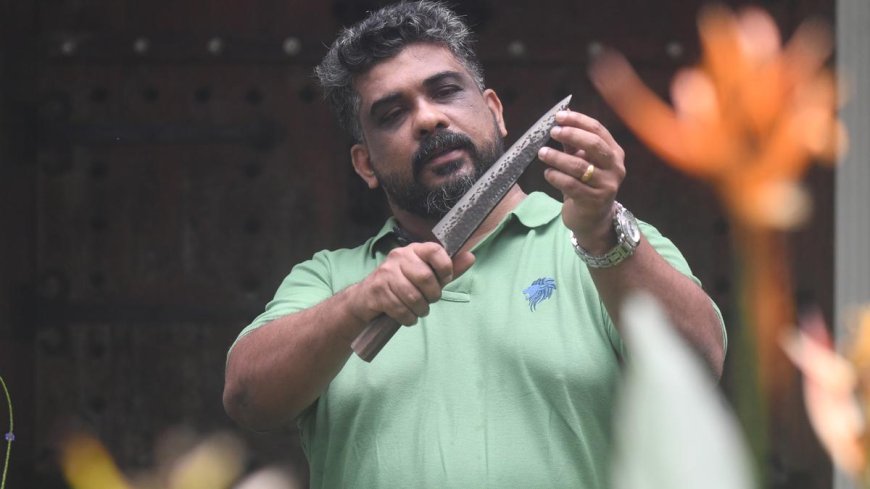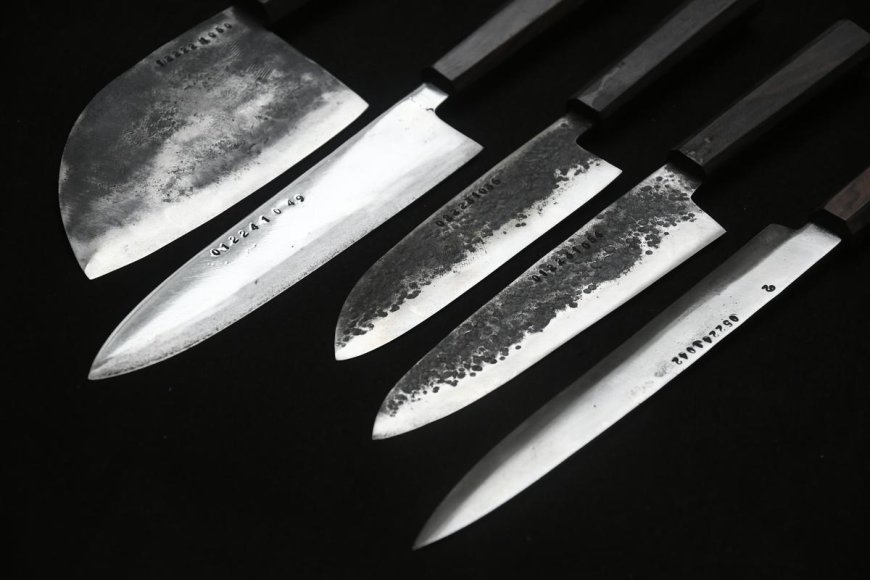The Japanese-style knifemaker of Chendamangalam

JAPANESE knives are the sportscars of the culinary world. They are sharp, purpose-built and stunning, but have to be handled with care.
Knives also have a deep resonance in Japanese culture, with links to Samurai sword-making techniques and a stellar role in imperial ceremonies such as the hocho-shiki, which is said to be over 1,200 years old and in which a priest fillets a fish using only a kitchen knife and chopsticks, without his hands once touching the fish.
Japanese kitchen knives also retain their sharpness a lot longer than knives produced in other countries, besides being lighter and better balanced. According to Money Control, chefs love them and so do cooking enthusiasts and collectors, some of whom, especially those in India, will point you in the direction of Jesudas Puthumana.
In about 18 months since he founded Urukk Blades, the Japanese-style kitchen knives made by Puthumana have been picked up by prominent chefs and collectors across the country and elsewhere.
Puthumana, a mechanical engineer who spent nearly two decades in Dubai before returning to Kerala about five years ago, uses traditional Indian blacksmithing techniques to forge various types of Japanese-style kitchen knives. His repertoire includes about 15 kitchen knives. These include the Santoku, an all-purpose knife for rock-style chopping, the Deba, a heavy-duty knife for cutting fish through bone and skin and the Nakiri, a vegetable cleaver.
“The Japanese are in a different league; they have a knife for every possible occasion. In Japan you’ll find blacksmiths who are celebrated for their work and are keeping their ancient traditions alive,” says Puthumana.
Puthumana is a DIY kind of guy. The 45-year-old stays in Chendamangalam, by the Periyar River, near Kochi, in a home he designed and built himself. He is especially proud of the wood-fired masonry oven in the kitchen, which is again his handiwork.
Twenty years ago, a documentary on the Katana introduced him to Japanese knives. The curiosity turned into an occasional hobby while he was in Dubai, and a visit to a blacksmith in Palakkad early last year revived his interest.

India has a great metallurgy tradition, says Puthumana; empires across the ages in several parts of the world sought out wootz, a crucible steel made in south India (Wootz is believed to be the anglicized version of ‘ukku’, or ‘urukku’, the word for molten steel in Tamil.) It was most famously used in the making of Damascus swords.
“Blacksmiths in India have tremendous generational knowledge, but, unlike in Japan, this is rarely acknowledged,” says Puthumana. “Both the knives made here and in Japan use ultra-high carbon steel, but the shapes and geometry have never been codified.”
Ultra-high carbon steel generally has a carbon component of between 1.2 and 2.0 percent. While the higher concentration of carbon creates a blade that is harder and more receptive to sharpening; it also becomes more brittle and prone to chipping. To mitigate this, the cutting edge is tempered after quenching to reduce the brittleness. Japanese knives have historically featured single-beveled blades with steeper bevel-cutting edges, while Western knives, which have been shaped by French and German cutlery traditions, have double-beveled edges.
Puthumana works with local blacksmiths near his home in Chendamangalam, heating blanks of high carbon steel in the forge, and pounding them with a hammer to shape them. The process is repeated several times before the blade is quenched. “We follow a 12-step process for each knife, and it takes about 15 hours to complete these steps,” says Puthumana.
The knives are sharpened using several progressive grades of traditional whetstones and can be ordered with several finishes, from a hammered finish to one with a black patina. The handles are made of rosewood, beech or ebony.
Of course, you don’t need an artisanal Japanese kitchen knife to ace it in the kitchen, but a well-made one has the same appeal as that exuded by a mechanical wristwatch. In a way, it resists the short-termism built into modern-day objects and is as much art as it is a functional object.
